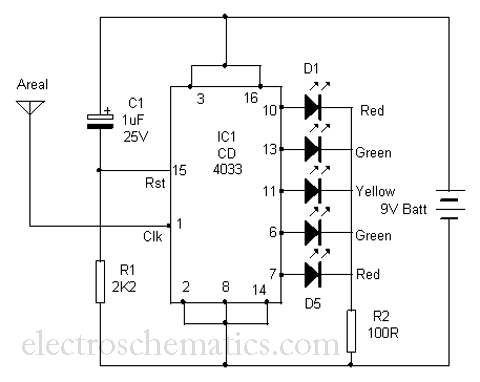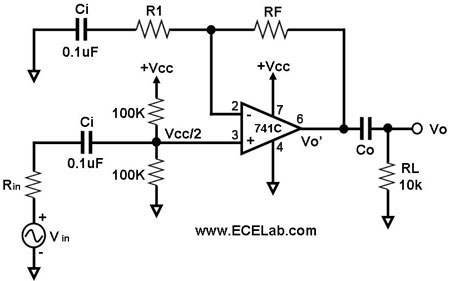
Constitute a CMOS circuit time adjustment of a spot welder

This document outlines a CMOS circuit designed for time adjustment in a spot welder. The circuit allows for the selection of a number of cycles, ranging from 1 to 99, with practical applications typically using around 10 cycles. The schematic includes integrated CMOS circuitry, featuring gates labeled 1 to 20 as C036, and counters designated as C180 for positions 21 and 22. D flip-flops are identified as C043 for positions 25 and 26, and a seven-segment decoder is utilized from the C036 series, along with an LED digital display identified as BS202.
The CMOS circuit for the spot welder is structured to provide precise control over the welding process by adjusting the time duration of each weld cycle. The core component of the circuit is a microcontroller or a dedicated CMOS logic IC that manages the timing sequences. The selection mechanism allows the user to set the desired number of cycles, which is a critical feature for varying material thicknesses and types.
In this configuration, the gates (C036) serve as the logical decision-making units of the circuit, enabling the control signals necessary for the operation of the flip-flops (C043). These flip-flops are essential for creating stable timing signals that dictate when the welder should activate and deactivate. The counters (C180) are used to keep track of the number of cycles completed, ensuring that the welder operates for the correct number of cycles as set by the user.
The seven-segment decoder from the C036 series translates the binary output from the counters into a readable format for the LED digital display (BS202), allowing operators to easily monitor the number of cycles selected and completed. This visual feedback is vital for ensuring that the welder operates within the desired parameters, enhancing both safety and efficiency.
Overall, this CMOS circuit design integrates various components to form a cohesive system that ensures accurate timing and control for spot welding applications, making it adaptable for different welding requirements.Constitute a CMOS circuit time adjustment of a spot welder The number of cycles it uses CMOS device composed of a control circuit, optionally in the range of 1 to 99 cycles to choose from. In actual use, most of them within 10 cycles adjusted enough. Drawing, are integrated with CMOS circuitry; gates 1 to 20 available C036; C180 counter available 21,22; D flip-flops 25, 26 Available C043; seven segment decoder applications C036; LED digital works BS202.
The CMOS circuit for the spot welder is structured to provide precise control over the welding process by adjusting the time duration of each weld cycle. The core component of the circuit is a microcontroller or a dedicated CMOS logic IC that manages the timing sequences. The selection mechanism allows the user to set the desired number of cycles, which is a critical feature for varying material thicknesses and types.
In this configuration, the gates (C036) serve as the logical decision-making units of the circuit, enabling the control signals necessary for the operation of the flip-flops (C043). These flip-flops are essential for creating stable timing signals that dictate when the welder should activate and deactivate. The counters (C180) are used to keep track of the number of cycles completed, ensuring that the welder operates for the correct number of cycles as set by the user.
The seven-segment decoder from the C036 series translates the binary output from the counters into a readable format for the LED digital display (BS202), allowing operators to easily monitor the number of cycles selected and completed. This visual feedback is vital for ensuring that the welder operates within the desired parameters, enhancing both safety and efficiency.
Overall, this CMOS circuit design integrates various components to form a cohesive system that ensures accurate timing and control for spot welding applications, making it adaptable for different welding requirements.Constitute a CMOS circuit time adjustment of a spot welder The number of cycles it uses CMOS device composed of a control circuit, optionally in the range of 1 to 99 cycles to choose from. In actual use, most of them within 10 cycles adjusted enough. Drawing, are integrated with CMOS circuitry; gates 1 to 20 available C036; C180 counter available 21,22; D flip-flops 25, 26 Available C043; seven segment decoder applications C036; LED digital works BS202.





